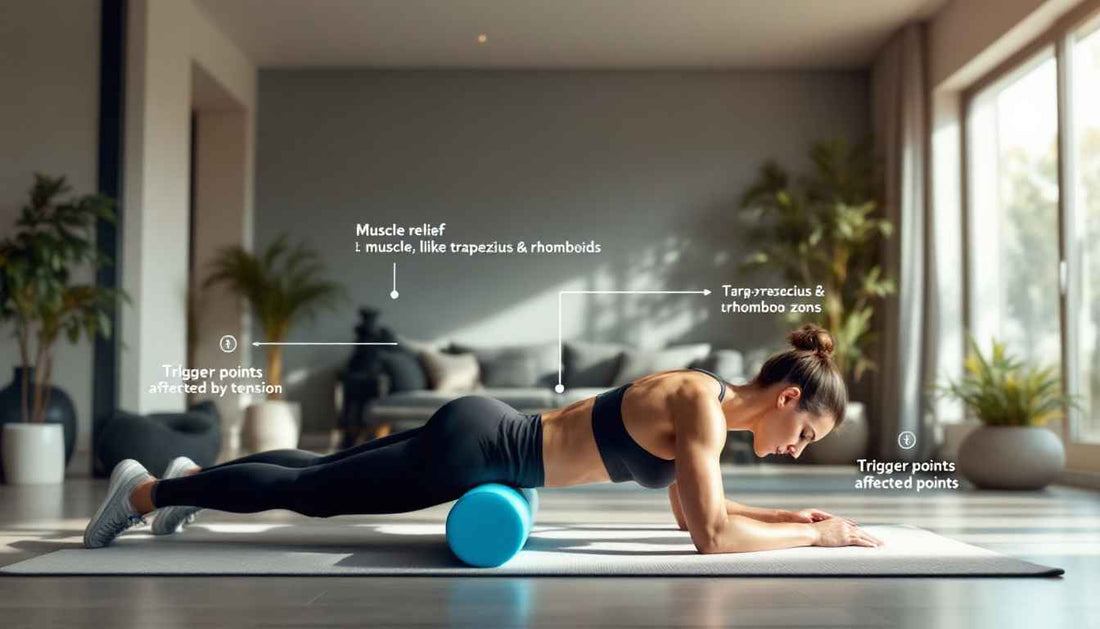
Foam Rolling Hacks: How to Use it for Maximum Pain Relief
Share
Tired of muscle tightness or lingering soreness that just won’t go away? Foam rolling could be your secret weapon. This simple tool offers powerful relief—loosening tight muscles, improving flexibility, and speeding up recovery.
Whether you’re a gym rat or a desk dweller, smart foam rolling can deliver major pain relief in just minutes a day. In this guide, we reveal expert-backed hacks that will help you use a foam roller for maximum results—quickly and safely.
Table of Contents
- What is Foam Rolling and How Does it Work?
- Science Behind Foam Rolling: Myofascial Release Explained
- Best Times to Use a Foam Roller
- Foam Rolling Hacks for Maximum Effectiveness
- Common Mistakes to Avoid
- Best Foam Rolling Tools for 2025
- Comparisons: Foam Rolling vs Massage Guns
- Internal Links
- FAQ
- Conclusion and CTA
1. What is Foam Rolling and How Does it Work?
Foam rolling is a self-massage technique called self-myofascial release. It uses a cylindrical roller to apply pressure across your muscles, targeting tight spots (trigger points) that cause discomfort and restrict movement.
The main goal? To break up knots, improve circulation, reduce soreness, and restore your mobility.
2. Science Behind Foam Rolling: Myofascial Release Explained
Your muscles are wrapped in fascia—thin connective tissue that can get stiff or inflamed from stress, inactivity, or overtraining. Foam rolling helps by applying direct pressure to these tight areas, softening the fascia and restoring range of motion.
Key benefits include:
- Better blood flow
- Less inflammation
- Improved flexibility
- Faster recovery from soreness (especially DOMS)
3. Best Times to Use a Foam Roller
- Before a workout: Wake up the muscles and reduce injury risk
- After a workout: Flush out lactic acid and ease soreness
- Before bed: Unwind tense muscles and promote deeper sleep
- During the workday: Release back, neck, or hip tension from sitting
🧠 Pro tip: Just 5 minutes a day can make a long-term difference in how you feel and move.
4. Foam Rolling Hacks for Maximum Effectiveness
- Prioritize Key Muscle Groups: Focus on your calves, quads, hamstrings, glutes, and upper back—where tightness often builds up.
- Go Slow: Roll each muscle group for at least 30–60 seconds. Fast rolling is less effective.
- Pause on Knots: When you find a tender spot, stop and apply pressure for 20–30 seconds to let it release.
- Breathe Through It: Deep breathing helps your nervous system relax, making the pressure more effective.
- Use Good Form: Engage your core and never roll directly over joints or bones.
💡 Bonus Hack: Stretch lightly after rolling to lock in flexibility gains.
5. Common Mistakes to Avoid
Avoid these common errors that can make foam rolling painful or ineffective:
- Rolling too quickly
- Using too much pressure
- Holding your breath
- Using old or poor-quality rollers
Focus on control, quality tools, and breathing—it’s not about “no pain, no gain.”
6. Best Foam Rolling Tools for 2025
Not all foam rollers are built the same. Choose one that matches your needs and goals:
- Recovyx Smart Foam Roller: Bluetooth-controlled, vibration-enabled, and intensity-adjustable—perfect for deep, customized relief.
- Textured Foam Rollers: Great for advanced users who want deeper trigger point targeting.
- Soft Foam Rollers: Best for beginners or those with high sensitivity or injuries.
🔧 Pro tip: Vibration rollers (like Recovyx) go deeper into muscle tissue and offer faster relief.
7. Comparisons: Foam Rolling vs Massage Guns
| Feature | Foam Rolling | Massage Gun |
|---|---|---|
| Portability | Medium | High |
| Customization | Low | High |
| Price | Low to Medium | Medium to High |
| Learning Curve | Easy | Easy |
| Relief Depth | Moderate | Deep |
🎯 Best approach? Use both: foam rolling for large muscle groups and massage guns for deep, targeted pressure.
8. Internal Links
- Daily Habits for a Pain-Free Life
- How Massage Guns Cut Recovery Time in Half
- Top Wearable Devices for Pain-Free Living in 2025
9. FAQ (Optimized for Featured Snippets)
Q: Is foam rolling good for daily use?
A: Yes—daily foam rolling improves flexibility, reduces muscle tightness, and prevents soreness.
Q: Can foam rolling cause harm?
A: Only if done wrong. Avoid joints, bones, or injured areas, and use proper form.
Q: How long should I foam roll per session?
A: Aim for 5–15 minutes, focusing on 3–5 major muscle groups.
Q: What’s the best foam roller for beginners?
A: A soft or smooth medium-density foam roller is ideal for easing into the habit.
10. Conclusion and CTA
Foam rolling is one of the simplest, most effective tools for pain relief and faster recovery. When done right, it helps you move better, feel looser, and recover faster.
🎁 Download our FREE “Foam Rolling Blueprint” and claim an exclusive 15% OFF the Recovyx Smart Foam Roller.
Start rolling your way to a pain-free life today.
